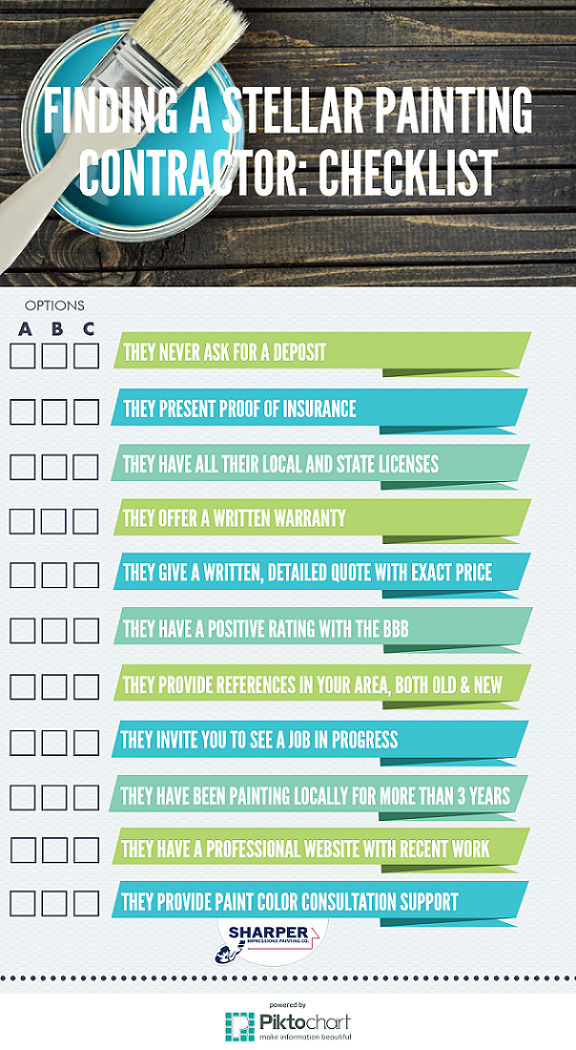Ready Your Wall Surfaces For Painting With Essential Tips And Techniques That Assure A Smooth Coating-- Explore The Important Actions To Improve Your Task
Ready Your Wall Surfaces For Painting With Essential Tips And Techniques That Assure A Smooth Coating-- Explore The Important Actions To Improve Your Task
Blog Article
Short Article Writer-Daugherty Lemming
When you're prepping your walls for paint, it's important to follow a methodical procedure to make certain a perfect finish. Begin by analyzing the wall for any damage; this step can make or break your job. When you've determined any problems, cleaning up the surface correctly is necessary, as a dirty wall surface can influence paint adhesion. Afterwards, you'll require to spot any blemishes and apply a primer. But there are specific methods and tips that can raise your preparation video game-- let's explore those more to attain the very best results.
Assessing Wall Condition
Before you grab your paintbrush, take a moment to examine your walls' problem. Look for https://www.adn.com/business/article/ramseys-interior-painting-makes-noticeable-home-improvement/2015/07/19/ like fractures, openings, or peeling off paint. These imperfections can impact just how the paint adheres and looks as soon as it's dry. If you notice any considerable damages, you'll require to prioritize fixings before diving right into painting.
Look closely at the structure of your walls. Is the surface area smooth, or is there texture that might call for unique factor to consider? Smooth wall surfaces typically require much less preparation, while textured surface areas might require even more time to paint evenly.
Also, think about the previous paint job. If the old paint is shiny, it mightn't allow brand-new paint to stick effectively. You'll need to know if your wall surfaces have been painted with oil-based or water-based paint, as this can impact your option of guide or paint.
Finally, keep in mind of any kind of moisture issues. If you see indicators of water damages or mold and mildew, address these problems immediately to prevent more problems.
Cleaning up the Surface area
When you have actually assessed the problem of your wall surfaces, the next step is cleansing the surface. Start by collecting your products: a container, cozy water, a moderate cleaning agent, a sponge or towel, and a scrub brush for harder places.
Begin at the top corner of the wall surface and work your means down. Mix the cleaning agent with warm water in your container, after that dip the sponge or cloth right into the service. Wring it out to stay clear of too much moisture on the walls.
As you clean, pay attention to areas that may've gathered dirt, oil, or finger prints. For persistent stains, make use of the scrub brush delicately to prevent damaging the paint beneath. Rinse your sponge or cloth regularly in tidy water to prevent spreading out dust around.
After cleaning, it's essential to wipe the wall surfaces with a wet fabric to remove any type of soap deposit. This action guarantees a smooth surface for the brand-new paint to stick to.
Allow the walls to completely dry totally prior to going on to the next preparation actions. This comprehensive cleansing process will aid develop a fresh canvas for your painting project, making sure the very best outcomes.
Patching and Priming
Patching and priming are crucial steps in preparing your wall surfaces for a fresh layer of paint. Initially, inspect exterior house painting tulsa for any kind of holes, splits, or flaws. Make use of a top quality spackling compound or patching paste to fill up these areas.
Use the substance with a putty blade, smoothing it out so it's flush with the bordering surface area. Permit it to dry entirely, and after that sand it lightly till it's smooth and even.
Once https://israelkpuaf.goabroadblog.com/32359235/ecologically-mindful-paint-solutions-trick-insights-for-your-factor-to-consider 've patched everything, it's time to prime. Primer helps seal the covered areas, ensuring the paint adheres properly and offers an uniform finish. Pick a guide appropriate for your wall type and the paint you'll be using.
Use the guide using a roller for bigger areas and a brush for edges and sides. If your patched locations are significantly large or permeable, you may want to use a 2nd layer of primer after the very first one dries out.
After priming, allowed everything completely dry extensively prior to moving on to painting. This preparation won't only enhance the look of your walls however also extend the life of your paint task.
Take your time, and you'll be pleased with the results.
Conclusion
By following these simple actions, you can accomplish a smooth and professional finish on your walls. Start by evaluating their condition, after that clean and spot any kind of blemishes before applying primer. Remember to allow adequate drying out time and guarantee everything is smooth prior to you dive into painting. With the right preparation, you'll establish the stage for a stunning change in your area. Currently, collect your supplies, inhale the fresh air, and get ready to paint!
